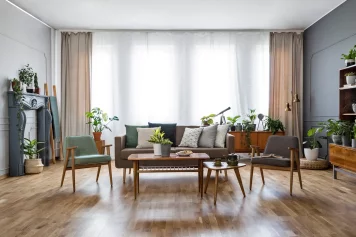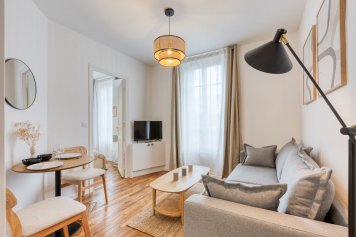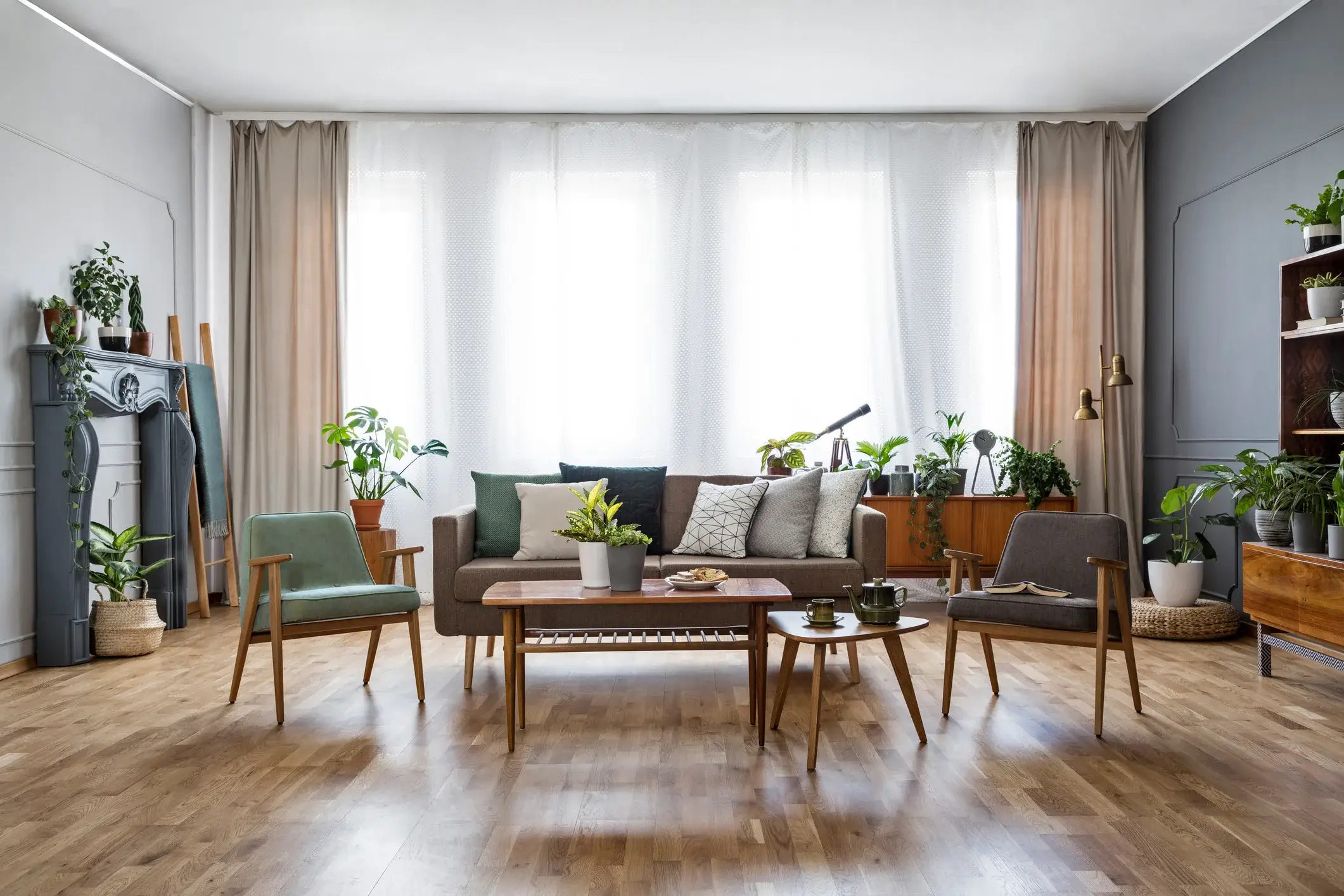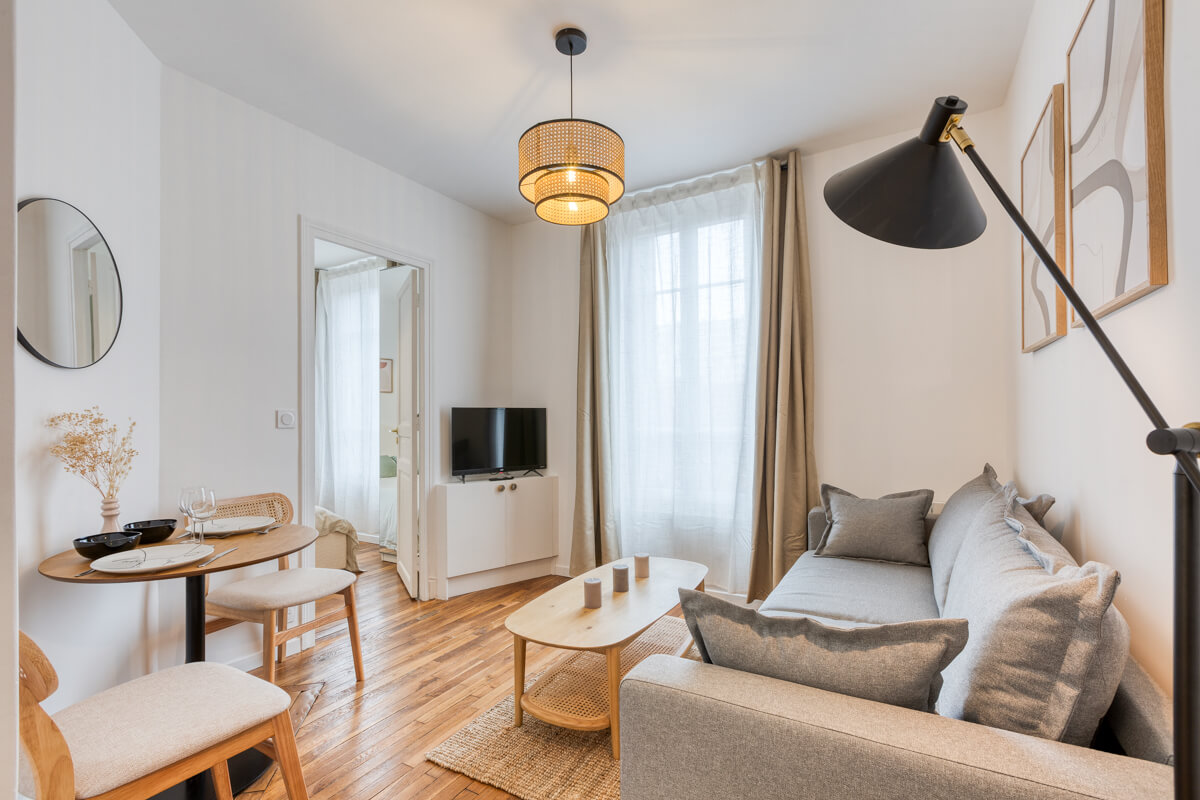L’isolation phonique occupe une place primordiale pour assurer un confort acoustique optimal. Que ce soit pour atténuer les bruits aériens venant de l’extérieur ou pour limiter les bruits d’impact à l’intérieur de votre espace, choisir le bon isolant phonique est essentiel. Mais face à la diversité des matériaux disponibles sur le marché, comment s’y retrouver et sélectionner celui qui répond le mieux à vos besoins spécifiques ?
En effet, le bruit est une nuisance omniprésente dans notre vie quotidienne, pouvant nuire à notre confort acoustique, notre santé et notre bien-être. Heureusement, l’isolation phonique offre une solution efficace pour réduire les nuisances sonores et créer un environnement calme et serein dans votre habitat.
Choisir le bon isolant phonique est crucial pour optimiser les performances acoustiques de votre isolation. Isolant phonique et isolant thermique ne sont pas forcément synonymes : il est important de sélectionner un matériau adapté à vos besoins spécifiques.
Ce guide complet vous accompagnera dans le choix de l’isolant phonique le plus adapté à vos besoins, en vous éclairant sur les différents types de matériaux disponibles, leurs caractéristiques et leurs performances acoustiques.Vous découvrirez également les principes de l’isolation phonique, tels que le système masse-ressort, et les différentes techniques de mise en œuvre pour murs, sols et plafonds.
Que vous souhaitiez atténuer les bruits aériens provenant de vos voisins ou de la circulation, ou réduire les bruits d’impact tels que les pas ou les chocs, ce guide vous permettra de trouver la solution isolation phonique idéale pour votre confort acoustique.N’attendez plus pour améliorer votre qualité de vie et créer un véritable havre de paix chez vous !
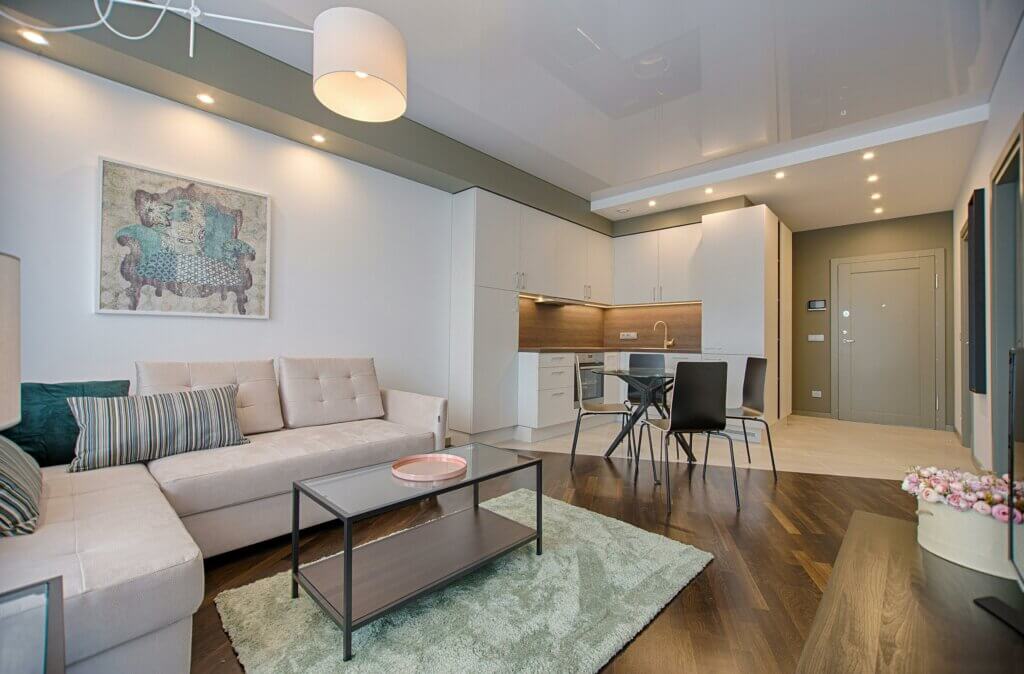
Identifier le type de bruit à atténuer
La première étape consiste à identifier le type de bruit dont vous souhaitez vous protéger. On distingue deux grandes catégories de bruits :
– Bruits aériens: ils se propagent dans l’air, comme le bruit de la circulation, des conversations ou de la musique des voisins.
– Bruits d’impact: ils sont causés par des chocs, comme des pas, des chutes d’objets ou des travaux dans les logements voisins.
Choisir le matériau isolant adapté
Chaque type de bruit nécessite un isolant phonique spécifique.
Contre les bruits aériens
Privilégiez les isolants denses et fibreux, comme la laine de roche, la laine de verre ou la fibre de bois.
Contre les bruits d’impact
Optez pour des isolants lourds et rigides, comme les panneaux de liège expansé ou les dalles de caoutchouc.
Considérer l’emplacement de l’isolation
L’emplacement de l’isolation est également un facteur important à prendre en compte.
Murs
Pour une isolation phonique optimale des murs, il est recommandé d’installer les isolants entre les montants métalliques ou dans les doublages.
Sols
Les isolants phoniques pour sols peuvent être installés sous le plancher flottant ou sous la chape.
Plafonds
Pour isoler phoniquement un plafond, vous pouvez fixer des plaques de plâtre acoustiques ou des panneaux isolants sur ossature métallique.
Évaluer les performances acoustiques
Les performances acoustiques d’un isolant phonique sont mesurées en décibels (dB). Plus l’indice d’affaiblissement acoustique (Rw) est élevé, plus l’isolant est efficace. Il est important de choisir un isolant avec un Rw adapté au niveau de bruit que vous souhaitez atténuer.
Prendre en compte le budget
Le prix des isolants phoniques varie en fonction du matériau, de l’épaisseur et de la marque. Il est important de définir votre budget avant de faire votre choix.
Faire appel à un professionnel
Si vous n’êtes pas bricoleur ou si vous avez des doutes sur le choix de l’isolant ou sa mise en œuvre, il est recommandé de faire appel à un professionnel. Un acousticien ou un isolateur qualifié pourra vous conseiller sur la meilleure solution pour vos besoins et réaliser les travaux dans les règles de l’art.
Les différents types de matériaux disponibles
Le choix de l’isolant phonique le plus adapté à vos besoins dépend de plusieurs facteurs, tels que le type de bruit à atténuer, l’emplacement de l’isolation et votre budget. Voici les principaux types de matériaux isolants phoniques disponibles sur le marché :
Les isolants fibreux
Laine de roche: Isolant polyvalent, efficace contre les bruits aériens et d’impact. Bonne résistance au feu et à l’humidité.
Laine de verre: Isolant économique et facile à mettre en œuvre. Bonnes performances contre les bruits aériens.
Fibre de bois: Isolant écologique et biosourcé. Bonnes performances thermiques et phoniques.
Ouate de cellulose: Isolant naturel à base de papier recyclé. Bonne performance phonique et thermique.
Les isolants rigides
Panneaux de liège expansé: Isolant écologique et performant contre les bruits d’impact. Bonne résistance à l’humidité.
Dalles de caoutchouc: Isolant très performant contre les bruits d’impact. Particulièrement adapté aux sols.
Panneaux de fibre de bois: Isolants rigides en fibre de bois, associant performances phoniques et thermiques.
Béton cellulaire: Isolant léger et performant contre les bruits aériens et d’impact. Bonne résistance au feu.
Autres isolants phoniques
Mousse acoustique: Isolant souple utilisé pour absorber les bruits réverbérés dans les pièces.
Panneaux de plâtre acoustiques: Plaques de plâtre composées de plâtre et de fibres textiles, offrant une performance phonique accrue.
Matériaux naturels: Liège, chanvre, coton… Des isolants naturels peuvent également être utilisés pour l’isolation phonique, avec des performances variables.
Chaque type de matériau isolant phonique présente ses propres avantages et inconvénients. Il est important de choisir l’isolant le plus adapté à vos besoins spécifiques en tenant compte du type de bruit à atténuer, de l’emplacement de l’isolation et de votre budget. N’hésitez pas à faire appel à un professionnel pour vous conseiller dans votre choix.
Quelques astuces
En complément de l’isolation phonique, vous pouvez également adopter d’autres mesures pour réduire le bruit dans votre logement, telles que :
– Installer des menuiseries double vitrage
– Poser des revêtements de sol et des murs absorbants
– Meubler votre intérieur avec des tapis, des rideaux et des bibliothèques
– Sensibiliser vos voisins aux nuisances sonores
En suivant ces conseils, vous pourrez créer un environnement calme et propice à la détente dans votre maison. N’hésitez pas à faire appel à un professionnel pour vous conseiller dans le choix de l’isolant phonique le plus adapté à vos besoins et pour réaliser les travaux d’isolation dans les règles de l’art.
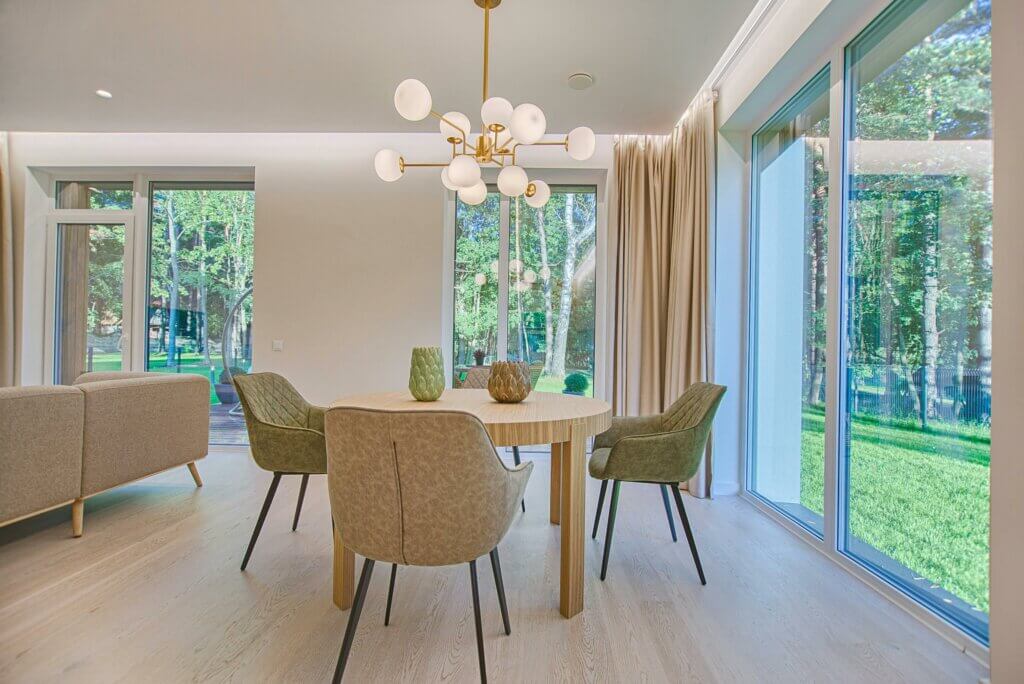
Réaliser une isolation phonique soi-même : guide pratique
L’isolation phonique est un projet réalisable soi-même, à condition de disposer des connaissances techniques et du matériel adéquat.
Si vous êtes bricoleur et que vous souhaitez réduire les nuisances sonores dans votre logement, voici un guide pratique pour vous accompagner dans la réalisation de votre isolation phonique.
Évaluer vos besoins
Avant de commencer, il est essentiel d’évaluer vos besoins en matière d’isolation phonique.
– Quel type de bruit souhaitez-vous atténuer ? (Bruits aériens, bruits d’impact ?)
– Où souhaitez-vous réaliser l’isolation ? (Murs, sols, plafonds ?)
– Quel est votre budget ?
Choisir l’isolant phonique
Le choix de l’isolant phonique est crucial pour l’efficacité de votre isolation :
– Privilégiez les isolants denses et fibreux pour les bruits aériens.
– Optez pour des isolants lourds et rigides pour les bruits d’impact.
– Tenez compte des performances acoustiques (indice d’affaiblissement acoustique Rw) et de l’épaisseur de l’isolant.
Se procurer le matériel
En fonction de l’isolant choisi et de la technique de pose, vous aurez besoin de différents matériaux :
– Isolant phonique
– Ossature métallique (pour certains isolants)
– Plaques de plâtre (pour certains isolants)
– Vis
– Chevilles
– Colle (pour certains isolants)
– Ruban adhésif
– Protection individuelle (gants, masque, lunettes)
Réaliser les travaux
Les techniques de pose varient en fonction de l’isolant et de l’emplacement.
Pour les murs : Installez l’isolant entre les montants métalliques ou dans un doublage.
Pour les sols : Posez l’isolant sous le plancher flottant ou sous la chape.
Pour les plafonds : Fixez des plaques de plâtre acoustiques ou des panneaux isolants sur une ossature métallique.
Finitions
Une fois l’isolation posée, vous pouvez réaliser les finitions selon vos envies : peinture, papier peint, etc.
Pour mener à bien votre projet d’isolation phonique, travaillez dans un endroit bien ventilé. Portez des protections individuelles et respectez les instructions du fabricant de l’isolant. Enfin, n’hésitez pas à faire appel à un professionnel si vous avez des doutes.
En suivant ces conseils et en vous appliquant, vous pourrez améliorer considérablement le confort acoustique de votre logement et créer un havre de paix pour vous et votre famille.
Quelles aides financières pour l’isolation phonique ?
L’amélioration de l’isolation phonique de votre logement peut s’avérer un investissement onéreux. Heureusement, diverses aides financières peuvent vous aider à financer vos travaux et à réduire votre reste à charge.
MaPrimeRénov’
MaPrimeRénov’ est le dispositif principal d’aide à la rénovation énergétique en France. Il s’adresse à tous les propriétaires occupants et bailleurs, sans conditions de ressources. Cette aide prend en charge jusqu’à 50 % du coût total des travaux d’isolation phonique, dans la limite d’un plafond de dépenses fixé par type de travaux et de zone géographique.
Certificat d’économie d’énergie (CEE)
Les CEE sont des aides financières délivrées par les fournisseurs d’énergie à leurs clients. Le montant de l’aide dépend du type de travaux et des performances énergétiques obtenues après la rénovation.
Aides locales
De nombreuses collectivités locales proposent également des aides à l’isolation phonique. Renseignez-vous auprès de votre mairie, de votre département ou de votre région pour connaître les dispositifs en vigueur dans votre zone géographique.
Éco-prêt à taux zéro (PTZ)
L’Éco-PTZ est un prêt immobilier à taux d’intérêt nul permettant de financer des travaux de rénovation énergétique, dont l’isolation phonique. Il est accessible aux propriétaires occupants et sous certaines conditions de ressources.
TVA réduite à 5,5 %
La TVA réduite à 5,5 % s’applique aux travaux d’isolation phonique réalisés dans les logements d’habitation de plus de deux ans.
Les conditions d’éligibilité aux aides financières
Pour bénéficier des aides financières à l’isolation phonique, il est important de respecter certaines conditions, notamment :
– Faire réaliser les travaux par un professionnel certifié RGE (Reconnu Garant de l’Environnement)
– Respecter les performances énergétiques minimales exigées
– Déposer un dossier de demande d’aide auprès de l’organisme compétent.
Isolation phonique écologique : pour un habitat responsable
L’isolation phonique n’est pas seulement un gage de confort acoustique, elle est également un enjeu environnemental.
En effet, les matériaux isolants traditionnels, comme la laine de verre ou le polystyrène expansé, sont souvent issus de ressources non renouvelables et peuvent avoir un impact négatif sur l’environnement.
Heureusement, il existe de nombreuses alternatives écologiques pour isoler phoniquement votre habitat tout en respectant l’environnement.
1. Isolants biosourcés
Les isolants biosourcés sont fabriqués à partir de matériaux naturels et renouvelables, comme le chanvre, le lin, la laine de mouton, le liège ou la ouate de cellulose.
Ces isolants ont l’avantage d’être performants sur le plan phonique et thermique, tout en étant écologiques et biodégradables.
2. Isolants recyclés
Les isolants recyclés sont fabriqués à partir de matériaux de récupération, comme le papier, le carton, le plastique ou le textile.
Ces isolants permettent de réduire la quantité de déchets et de donner une seconde vie à des matériaux qui seraient autrement jetés.
3. Isolants naturels non transformés
Certains matériaux naturels peuvent être utilisés bruts pour l’isolation phonique, comme la paille, le bois ou le liège expansé.
Ces isolants ont l’avantage d’être particulièrement écologiques et économiques.
Les avantages de l’isolation phonique écologique
L’isolation phonique écologique présente de nombreux avantages, tant pour l’environnement que pour votre santé :
– Réduction de l’impact environnemental
– Utilisation de ressources renouvelables
– Amélioration de la qualité de l’air intérieur
– Création d’un habitat sain et confortable
– Soutien à l’économie locale
En outre, l’isolation phonique écologique est une solution durable et responsable pour améliorer le confort acoustique de votre habitat tout en respectant l’environnement.En choisissant des isolants biosourcés, recyclés ou naturels non transformés, vous contribuez à la préservation de l’environnement et créez un habitat sain et confortable pour vous et votre famille.
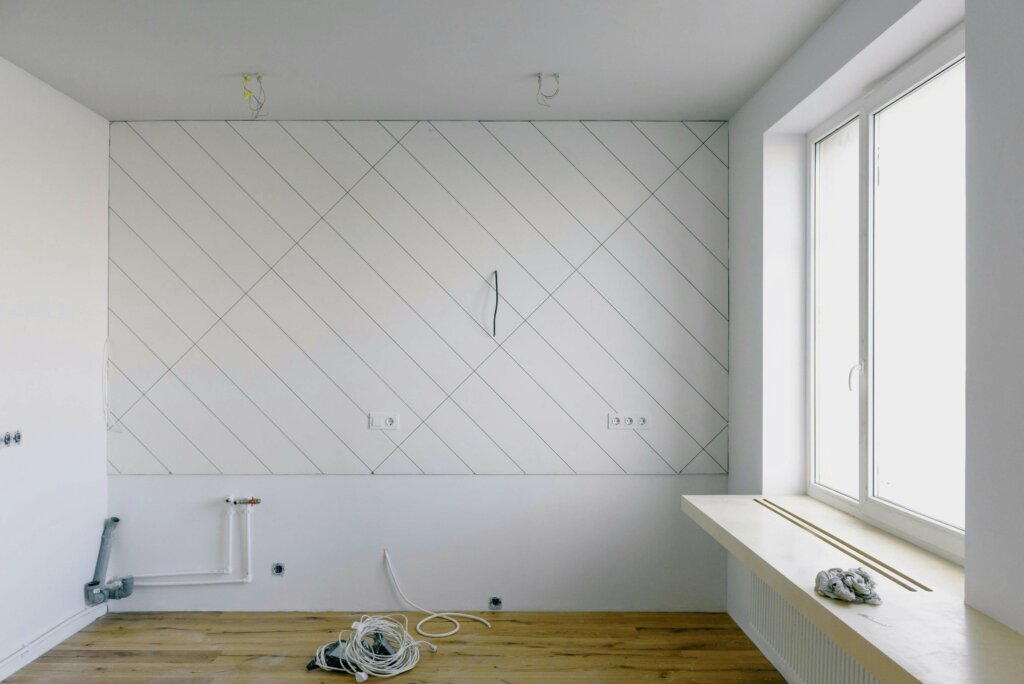
Législation et réglementation en matière d’isolation phonique
La législation et la réglementation en matière d’isolation phonique constituent des éléments essentiels à prendre en compte lors de tout projet de construction ou de rénovation. Ces normes, souvent établies pour garantir un confort acoustique optimal dans les habitations et les bâtiments, varient d’un pays à l’autre et peuvent même différer selon les régions. Elles définissent les critères minimums à respecter en termes d’isolation acoustique et peuvent imposer l’utilisation de certains matériaux ou techniques spécifiques pour atteindre ces objectifs.
En France, par exemple, la réglementation acoustique est encadrée par le code de la construction et de l’habitation, notamment à travers les normes relatives aux bâtiments d’habitation neufs (RT2012) et aux bâtiments rénovés (RT existant). Ces normes fixent des exigences en matière d’isolation phonique pour différents éléments de construction tels que les murs, sols, et plafonds, ainsi que pour les fenêtres et les portes. Elles visent à garantir un niveau minimal de protection contre les bruits aériens extérieurs et intérieurs, ainsi qu’à assurer une bonne isolation thermique pour réduire les pertes d’énergie.
Outre les normes nationales, il est également important de se référer aux réglementations locales et aux plans d’urbanisme qui peuvent imposer des exigences supplémentaires en matière d’isolation acoustique. Par exemple, dans les zones à forte densité de population ou à proximité d’infrastructures bruyantes telles que les autoroutes ou les aéroports, des normes spécifiques peuvent être mises en place pour limiter les nuisances sonores et garantir un confort sonore optimal pour les résidents.
En résumé, se conformer à la législation et à la réglementation en matière d’isolation phonique est crucial pour garantir le bien-être des occupants d’un bâtiment et éviter tout litige ou non-conformité lors de projets de construction ou de rénovation.
Combien coûte une isolation phonique ?
Le coût d’une isolation phonique varie en fonction de plusieurs facteurs :
Le type d’isolant
Les isolants les plus économiques sont les isolants fibreux (laine de verre, laine de roche), tandis que les isolants les plus performants, comme les isolants denses ou les panneaux de liège expansé, sont plus onéreux.
L’épaisseur de l’isolant
Plus l’isolant est épais, plus il sera performant et plus il sera coûteux.
La technique de pose
La pose d’un isolant entre les montants métalliques d’une cloison est moins technique et donc moins coûteuse que la pose sous un plancher flottant ou sur un plafond.
La surface à isoler
Le prix total de l’isolation augmentera proportionnellement à la surface à isoler.
Le coût de la main-d’œuvre
Si vous faites appel à un professionnel pour réaliser les travaux, il faudra compter le coût de la main-d’œuvre en plus du prix des matériaux.
En moyenne, le prix d’une isolation phonique pose comprise se situe entre 20 et 90 € par mètre carré.
– Pour les murs, il faut compter entre 20 et 40 € par mètre carré.
– Pour les sols, le prix varie entre 10 et 60 € par mètre carré.
– Pour les plafonds, il faut compter entre 25 et 45 € par mètre carré.
Voici quelques exemples de prix pour différents types d’isolation phonique :
– Isolation phonique des murs avec de la laine de verre (5 cm d’épaisseur) : entre 15 et 25 € par mètre carré pose comprise.
– Isolation phonique des sols avec des panneaux de liège expansé (4 cm d’épaisseur) : entre 40 et 50 € par mètre carré pose comprise.
– Isolation phonique du plafond avec des plaques de plâtre acoustiques : entre 30 et 40 € par mètre carré pose comprise.
Il est important de demander plusieurs devis à des professionnels afin de comparer les prix et de choisir la meilleure offre.
Le coût d’une isolation phonique peut être un frein pour certains ménages. Cependant il est important de ne pas négliger l’importance du confort acoustique et de prendre en compte les bénéfices à long terme d’une bonne isolation phonique, comme la réduction du stress, l’amélioration de la qualité du sommeil et la valorisation de votre bien immobilier.
Exemples de devis isolation phonique
Type d’isolation | Surface (m²) | Isolant | Épaisseur (cm) | Prix (€ HT) | Prix (€ TTC) |
Isolation phonique des murs | 20 | Laine de verre | 5 | 400 | 480 |
Isolation phonique des murs | 20 | Panneaux de fibre de bois | 10 | 600 | 720 |
Isolation phonique des sols | 15 | Dalle de liège expansé | 4 | 300 | 360 |
Isolation phonique des sols | 15 | Panneaux de mousse acoustique | 5 | 225 | 270 |
Isolation phonique du plafond | 18 | Plaques de plâtre acoustiques | 10 | 450 | 540 |
Isolation phonique du plafond | 18 | Panneaux de laine de bois | 6 | 360 | 432 |
Ces exemples de devis sont donnés à titre indicatif et peuvent varier en fonction de la région, du professionnel et des matériaux utilisés.
Les différents techniques d’isolation phonique
L’efficacité d’une isolation phonique dépend de plusieurs facteurs, dont le choix de l’isolant, la technique de pose et la mise en œuvre.
Voici les principales techniques d’isolation phonique :
1. Isolation des murs
Doublage : Il s’agit de créer une nouvelle cloison devant le mur existant, en y intercalant un isolant phonique. Le doublage est la technique la plus efficace pour isoler phoniquement un mur.
Ossature métallique : L’isolant est fixé sur une ossature métallique, puis recouvert de plaques de plâtre.
Contre-cloison : Une contre-cloison est une cloison plus légère que le doublage, fixée directement sur le mur existant.
2. Isolation des sols
Dalle flottante : L’isolant est posé sous la chape, puis un revêtement de sol (parquet, carrelage, etc.) est posé dessus.
Sous-couche acoustique : Une sous-couche acoustique est posée sous le revêtement de sol, afin de réduire les bruits d’impact.
3. Isolation des plafonds
Plafond suspendu : Un plafond suspendu est un faux plafond fixé à une ossature métallique, dans lequel l’isolant est installé.
Plaques de plâtre acoustiques : Des plaques de plâtre acoustiques, spécialement conçues pour absorber les bruits, peuvent être posées sur le plafond existant.
4. Autres techniques
Isolation des menuiseries : Les joints des menuiseries peuvent être comblés avec un mastic acoustique, et les vitrages peuvent être remplacés par des vitrages phoniques.
Isolation des portes : Les portes peuvent être isolées phoniquement en posant un joint d’isolation sur le pourtour et en remplissant le vide intérieur avec de la laine de verre ou de la mousse acoustique.
Principe de base
Le principe de base de l’isolation phonique est de créer une barrière entre la source du bruit et l’oreille humaine.
L’isolant phonique doit être dense et fibreux pour absorber les ondes sonores. Il doit également être épais pour réduire efficacement le bruit.
Les conseils de notre cabinet d’architecture
Faites appel à un professionnel pour vous conseiller sur la meilleure technique d’isolation phonique pour votre logement.
Respectez les normes de construction en vigueur en matière d’isolation phonique.
Combinez l’isolation phonique avec l’isolation thermique pour optimiser les performances de votre logement.
Isolation phonique : vers un havre de paix acoustique !
L’isolation phonique est un élément crucial pour créer un environnement calme et serein dans votre habitat. En atténuant les nuisances sonores, elle améliore votre confort acoustique et contribue à votre bien-être. Choisir le bon isolant phonique est essentiel pour optimiser les performances acoustiques de votre isolation. Il existe une large gamme de matériaux isolants, chacun avec ses propres caractéristiques et ses avantages.
En choisissant l’isolant phonique le plus adapté à vos besoins, vous améliorerez considérablement votre confort acoustique et créerez un environnement calme et serein dans votre maison. N’hésitez pas à faire appel à un professionnel pour vous guider dans votre choix et vous accompagner dans la réalisation de vos travaux d’isolation phonique.
Que vous souhaitiez réduire les bruits aériens provenant de vos voisins ou de la circulation, ou atténuer les bruits d’impact tels que les pas ou les chocs, il existe une solution isolation phonique adaptée à vos besoins. N’attendez plus pour améliorer votre qualité de vie et créer un véritable havre de paix chez vous ! Notez bien qu’un investissement dans l’isolation phonique est un investissement dans votre bien-être et dans votre qualité de vie.



